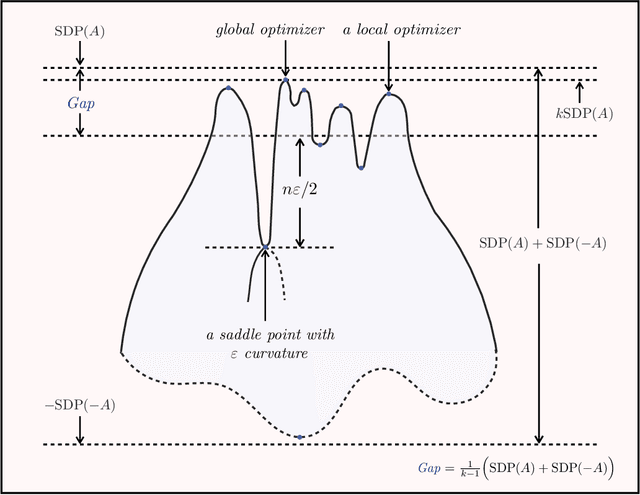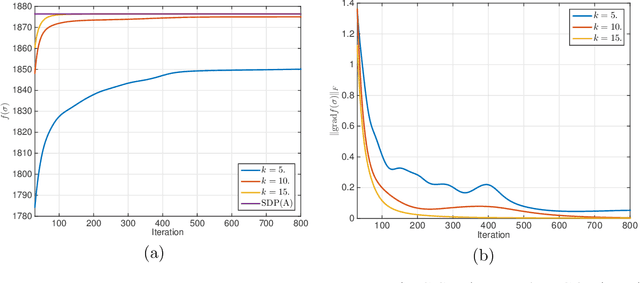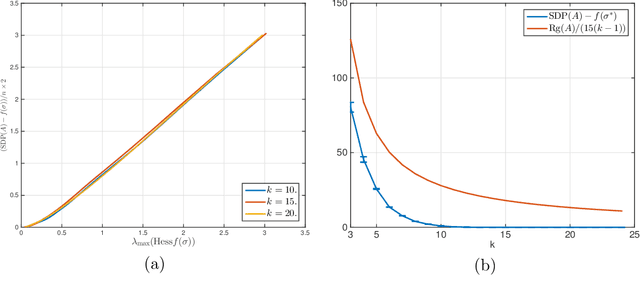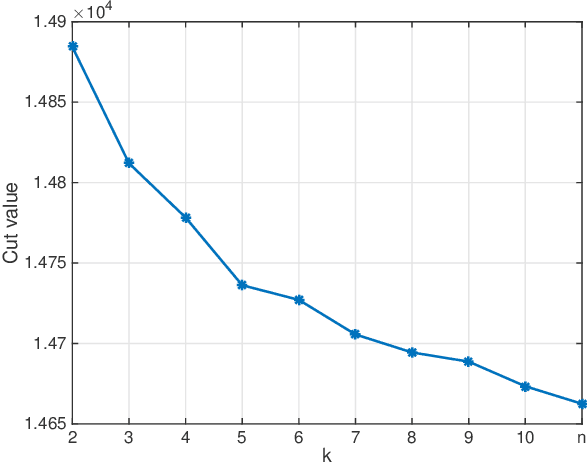Solving SDPs for synchronization and MaxCut problems via the Grothendieck inequality
Paper and Code
Mar 29, 2017



A number of statistical estimation problems can be addressed by semidefinite programs (SDP). While SDPs are solvable in polynomial time using interior point methods, in practice generic SDP solvers do not scale well to high-dimensional problems. In order to cope with this problem, Burer and Monteiro proposed a non-convex rank-constrained formulation, which has good performance in practice but is still poorly understood theoretically. In this paper we study the rank-constrained version of SDPs arising in MaxCut and in synchronization problems. We establish a Grothendieck-type inequality that proves that all the local maxima and dangerous saddle points are within a small multiplicative gap from the global maximum. We use this structural information to prove that SDPs can be solved within a known accuracy, by applying the Riemannian trust-region method to this non-convex problem, while constraining the rank to be of order one. For the MaxCut problem, our inequality implies that any local maximizer of the rank-constrained SDP provides a $ (1 - 1/(k-1)) \times 0.878$ approximation of the MaxCut, when the rank is fixed to $k$. We then apply our results to data matrices generated according to the Gaussian ${\mathbb Z}_2$ synchronization problem, and the two-groups stochastic block model with large bounded degree. We prove that the error achieved by local maximizers undergoes a phase transition at the same threshold as for information-theoretically optimal methods.
 Add to Chrome
Add to Chrome Add to Firefox
Add to Firefox Add to Edge
Add to Edge